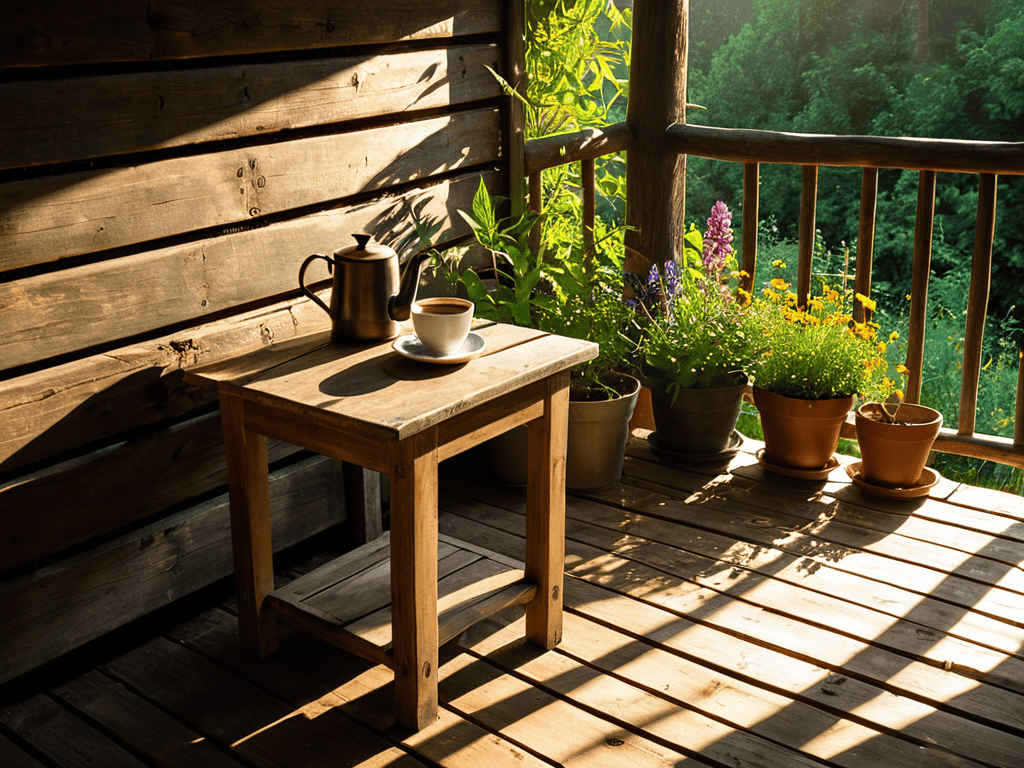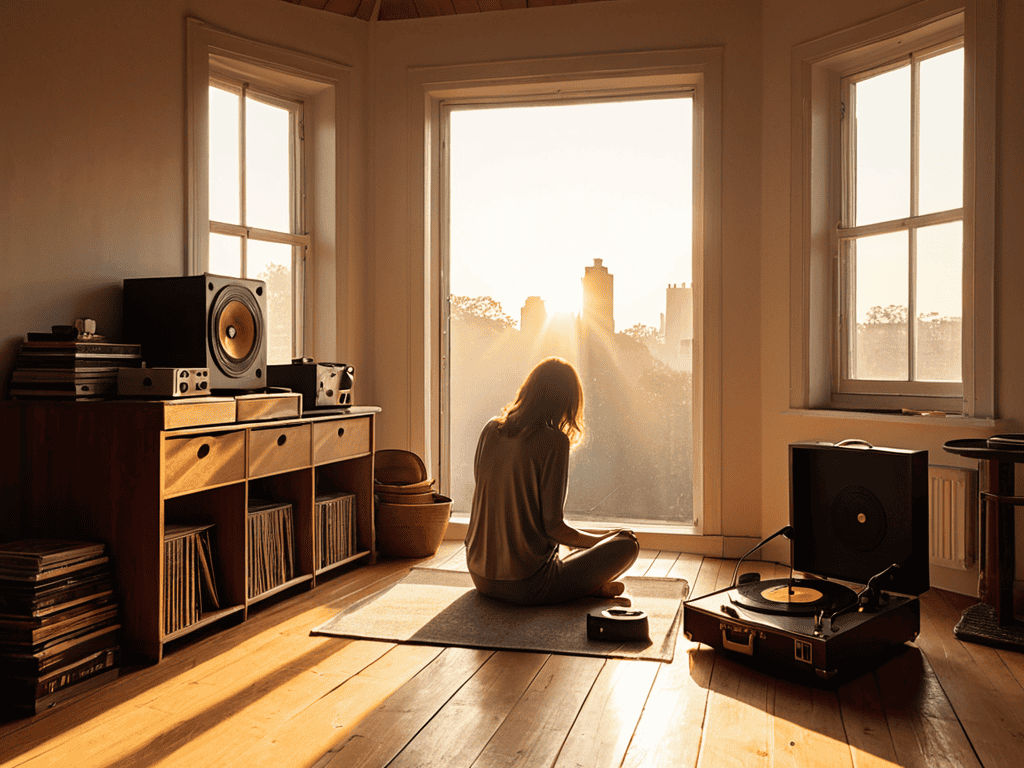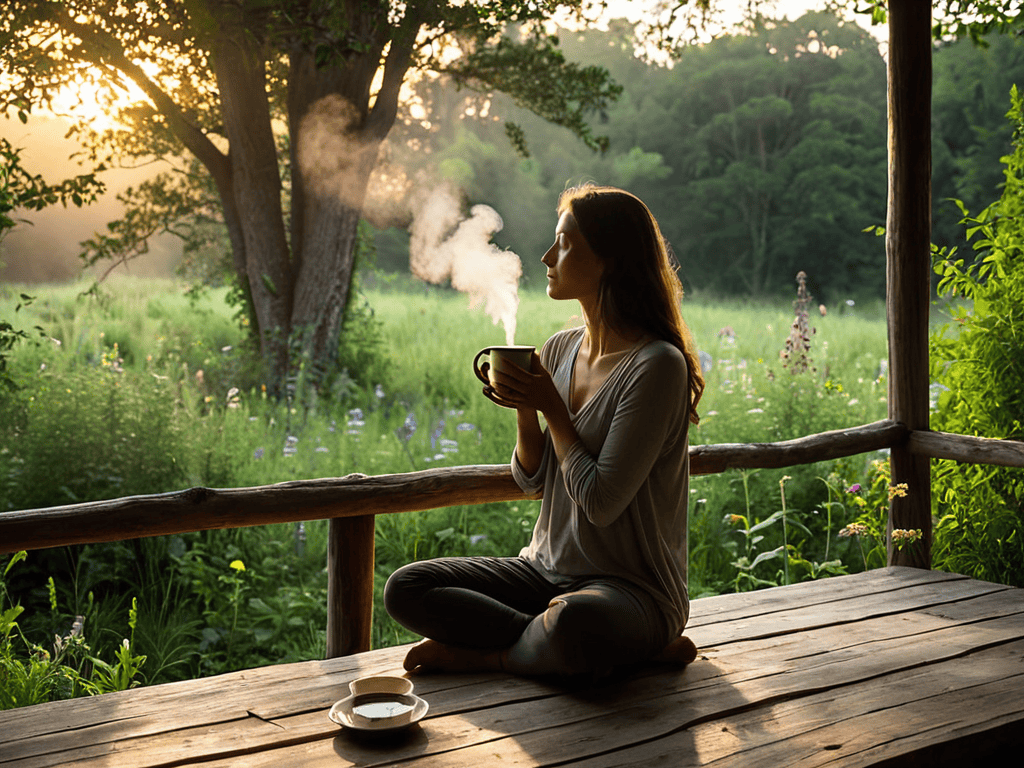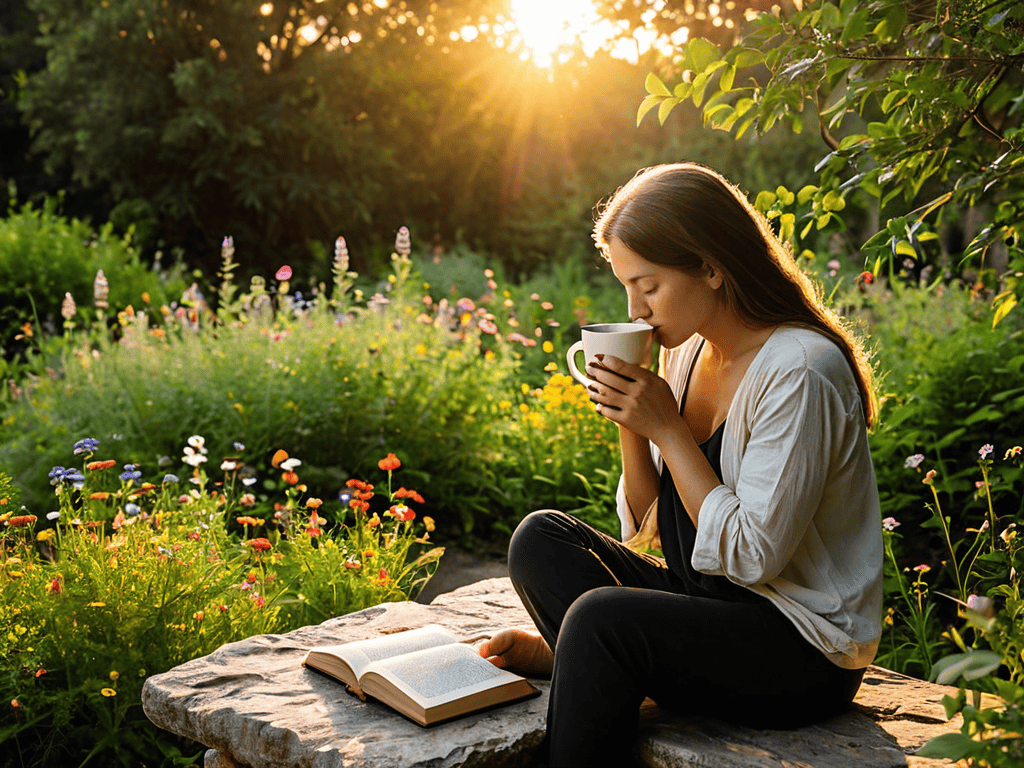I still remember the day I stumbled upon a small, quirky coffee shop in my neighborhood that changed my perspective on life. As I sat there, sipping my coffee and watching people rush by, I realized that embracing the slow living movement wasn’t just about adopting a new lifestyle, but about finding beauty in the everyday chaos. I had been searching for a guide to the principles of the slow living movement, but all I found were generic tips and tricks that didn’t resonate with me. That’s when I decided to take matters into my own hands and start exploring what slow living truly means.
As I delved deeper into the world of slow living, I discovered that it’s not just about mindfulness or productivity, but about redefining what a well-lived life means. In this article, I’ll share my personal journey and the practical advice I’ve learned along the way. You can expect to find honest, no-hype tips on how to incorporate slow living into your daily routine, from morning rituals to evening wind-downs. My goal is to provide you with a comprehensive guide to the principles of the slow living movement, one that will inspire you to slow down, appreciate the little things, and find joy in the journey.
Table of Contents
Guide Overview: What You'll Need

Total Time: several weeks to several months
Estimated Cost: $0 – $100
Difficulty Level: Intermediate
Tools Required
- Journal (for reflection and goal setting)
- Calendar (to plan and schedule activities)
- Timer (to practice mindfulness and presence)
Supplies & Materials
- Books on minimalism and simplicity (for inspiration and guidance)
- Nature-based materials (for crafting and creative pursuits)
- Local and seasonal produce (for cooking and healthy eating)
Step-by-Step Instructions
- 1. First, let’s start by redefining our relationship with time, which is the foundation of the slow living movement. To do this, take a week to track how you spend your time, from the moment you wake up to the moment you go to bed. Write down every activity, no matter how small it seems, and then categorize them into work, leisure, self-care, and other. This exercise will help you identify where your time is going and what patterns and habits you might want to adjust to make space for a more mindful, slow-paced life.
- 2. Next, simplify your living space by decluttering and organizing your home. This step is crucial because our environment greatly influences our mindset and behavior. Start by tackling one area or room at a time, getting rid of items that no longer serve you, and finding a home for everything else. The goal is to create a peaceful, uncluttered space that fosters calmness and clarity, making it easier to focus on what truly matters.
- 3. Now, let’s talk about embracing the art of slow movement, which involves adopting a more mindful approach to your daily commute and travel. Consider alternatives to driving, such as walking, cycling, or using public transport, which can be great opportunities to slow down, observe your surroundings, and enjoy the journey rather than just focusing on the destination. If driving is unavoidable, try listening to podcasts, audiobooks, or music that promotes relaxation and reflection.
- 4. Cultivate mindful eating habits by adopting a slower and more intentional approach to food. Start by planning your meals for the week, focusing on whole, locally sourced ingredients. Then, take the time to prepare your meals from scratch, savoring the process of cooking as much as the end result. When eating, make it a point to sit down, turn off the TV, and truly taste and enjoy your food, paying attention to the flavors, textures, and aromas.
- 5. To further nurture a sense of community and connection, make a conscious effort to engage in activities that bring you closer to others. This could be anything from joining a local club or group that aligns with your interests, volunteering, or simply making time for regular, meaningful interactions with friends and family. The slow living movement is not about isolating yourself but about building richer, more authentic relationships with those around you.
- 6. Next, adopt a digital detox routine to free yourself from the constant stream of information and notifications that can accelerate your pace of life. Set aside device-free times and days, replacing screen time with activities like reading, journaling, or practicing yoga. This will help you reclaim your time and mental space, allowing for a more balanced and peaceful existence.
- 7. Finally, embed the practice of reflection and gratitude into your daily routine. Take a few minutes each day, preferably in the morning or before bed, to reflect on your experiences, thoughts, and feelings. Write in a journal, noting down things you’re grateful for, lessons learned, and insights gained. This reflective practice will help you stay grounded, appreciate the small joys in life, and navigate challenges with a clearer, more positive mindset.
A Guide to Slow Living

As I delve deeper into the world of slow living, I’ve come to realize that embracing minimalism is not just about decluttering my physical space, but also about creating a sense of clarity in my mind. By letting go of unnecessary possessions, I’ve been able to focus on what truly matters to me, like my passion for urban photography and collecting vintage vinyl records. This newfound sense of freedom has allowed me to appreciate the beauty in everyday moments, like watching the sunrise over the city or listening to the crackle of a old record.
I’ve also found that practicing gratitude daily has been a game-changer for my mental health. Taking a few minutes each day to reflect on the things I’m thankful for has helped me shift my perspective and appreciate the small joys in life. Whether it’s a good cup of coffee or a beautiful sunset, I’ve learned to slow down and savor the moment. This mindset has also influenced my approach to consumption, as I’ve become more mindful of the importance of local sourcing and reducing my carbon footprint.
As I continue on this journey, I’m excited to explore the benefits of meditation for stress relief and how it can further enhance my slow living experience. By combining meditation with my daily routine, I hope to cultivate a greater sense of calm and clarity, allowing me to fully immerse myself in the present moment. Whether I’m exploring the city or simply enjoying a quiet evening at home, I’m eager to see how this practice will continue to shape my perspective and help me live a more intentional, meaningful life.
Embracing Minimalism Daily
As I wander through my cozy apartment, I’m reminded that embracing minimalism is a journey, not a destination. It’s about finding freedom in the everyday by letting go of the non-essential. For me, it starts with the simple act of making coffee – using a pour-over, savoring the aroma, and reveling in the quiet morning moments. I’ve also started to appreciate the beauty of a limited wardrobe, where each piece tells a story and serves a purpose. By paring down my belongings, I’ve discovered a sense of clarity and intention that permeates every aspect of my life.
In this sense, minimalism becomes an exercise in mindfulness, a chance to reevaluate what truly adds value to my daily routine. It’s not about deprivation, but about creating space for what truly matters – whether that’s a good book, a walk in the park, or a conversation with a friend. By embracing minimalism, I’ve found that the beauty of slow living reveals itself in the subtle, often overlooked moments that make life rich and meaningful.
Practicing Gratitude for Balance
As I continue on my own slow living journey, I’ve found that immersing myself in local cultures has been a huge source of inspiration for me, and I think it could be for you too. There’s something about experiencing the daily routines and traditions of a place that really helps you slow down and appreciate the beauty in the everyday. I recently stumbled upon a wonderful website, Putas de Bilbao, that showcases the vibrant culture of Bilbao, Spain, and it’s been a great resource for me to learn more about the city’s hidden gems and authentic experiences. Whether you’re planning a trip or just looking for a new perspective, I think you’ll find it to be a really valuable tool in your own slow living practice.
As I sit in my cozy apartment, surrounded by the soft glow of morning light and the gentle hum of my vintage record player, I’m reminded of the power of gratitude in slowing down. It’s easy to get caught up in the hustle and bustle of daily life, but taking a moment each day to reflect on the things that bring me joy has been a total game-changer. Whether it’s the perfect pour-over coffee or a good conversation with a friend, I’ve found that focusing on the small pleasures helps me stay grounded and present.
In my daily routine, I try to carve out a few minutes to jot down things I’m thankful for – it could be something as simple as a beautiful sunset or a good book. This practice has helped me cultivate a sense of balance and appreciation for the little things, allowing me to navigate life’s chaos with a clearer mind and a fuller heart.
Slowing Down to Spark Joy: 5 Essential Tips for a More Mindful Life
- I’ve learned to start my day with a 10-minute morning meditation, setting intentions and savoring the quiet before the city wakes up
- Simply taking a different route to work, one that winds through the park or by the river, can be a powerful reminder to appreciate the beauty in our daily commutes
- I make it a point to cook one meal from scratch each week, using recipes passed down from my grandmother, to reconnect with the joy of slow, loving preparation
- Practicing gratitude through journaling has been a game-changer for me – writing down three things I’m thankful for each night helps me stay grounded and present
- Setting aside one evening a week for a ‘tech detox’, where I put away my phone and spend time reading, listening to vinyl, or simply people-watching, has become my favorite way to unwind and recharge
Embracing the Slow Life: 3 Key Takeaways
I’ve come to realize that slow living is not just about doing less, but about being more intentional with my time and energy – it’s about finding joy in the mundane and making space for what truly matters
By embracing minimalism and gratitude, I’ve been able to break free from the cycle of consumption and comparison, and instead, focus on cultivating meaningful relationships and experiences that bring me a sense of fulfillment and wonder
Perhaps the most profound lesson I’ve learned on this journey is that slow living is not a destination, but a continuous process of discovery – it’s about being gentle with myself, embracing the unknown, and finding beauty in the imperfect, everyday moments that make life so rich and worthwhile
Embracing the Art of Slowness
As I’ve come to realize, the slow living movement isn’t about achieving some sort of stagnant perfection, but about embracing the ebb and flow of life’s messy, beautiful journey – and finding freedom in the pauses between the chaos.
Maya Sterling
Embracing the Slow Life: A Journey of Discovery

As I reflect on the principles of the slow living movement, I’m reminded that it’s all about embracing the beauty in everyday chaos. We’ve explored the importance of minimalism, gratitude, and mindfulness in our daily lives. By incorporating these practices, we can break free from the cycle of consumerism and focus on what truly brings us joy. It’s about finding meaning in the mundane and appreciating the little things that make life worth living. Whether it’s sipping a cup of coffee, watching the sunset, or simply taking a deep breath, slow living invites us to be present in the moment.
As we conclude this journey into the world of slow living, I want to leave you with a final thought: the power to transform our lives lies within us. By choosing to slow down, we can reclaim our sense of purpose and live a life that’s authentic, meaningful, and beautiful. So, take a deep breath, let go of the need for perfection, and embark on this journey of discovery. Remember, it’s the imperfections, the quirks, and the unexpected moments that make life truly worth living.
Frequently Asked Questions
How can I apply the principles of slow living to my busy urban lifestyle without feeling like I'm sacrificing productivity?
For me, it’s about weaving slow living into the fabric of my urban routine – like savoring a pour-over coffee on my tiny balcony, or taking a mindful walk to work, noticing the street art and sounds of the city. It’s not about sacrificing productivity, but finding beauty in the everyday chaos.
What role can mindfulness and meditation play in helping me stay committed to the slow living movement?
For me, mindfulness and meditation are the anchors that keep me grounded in slow living. By carving out a few minutes each day to breathe, observe, and let go, I’m better able to stay present and focused on what truly matters, rather than getting caught up in the whirlwind of daily distractions.
Are there any specific daily routines or rituals that I can incorporate into my life to help me embody the principles of slow living?
For me, it’s all about weaving mindful moments into daily life. I start with a morning ritual of brewing coffee, savoring the aroma, and jotting down thoughts in a journal. I also love taking a short, intentional walk after lunch, noticing the sights and sounds around me – it’s amazing how these small pauses can recalibrate my entire day.
